Natural Features of Hossa National Park
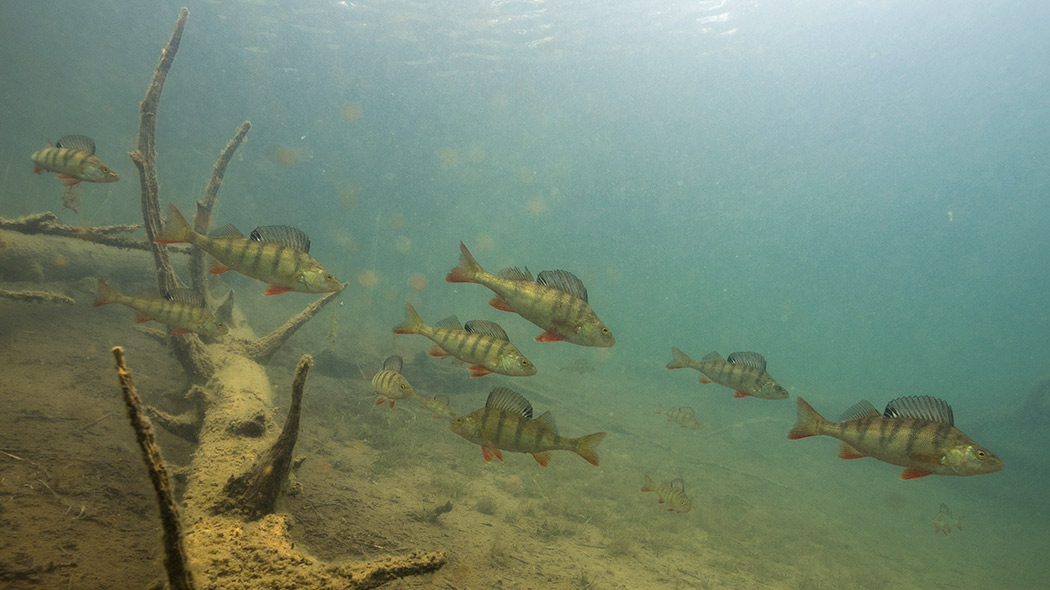
Julma-Ölkky Canyon Lake a remnant of the Ice Age
The nature in Hossa National Park is as wide-ranging as the land itself. Hikers can admire crystal clear esker ponds, cross buzzing heaths, hop from tussock to tussock in mires and delve deep into an old-growth spruce forest to hear the whisper of a babbling brook.

The Ice Age has laid the foundation for Hossa's nature. The retreating continental ice sheet made deep eskers, with their steep faces and kettle holes. At the edge of the ice sheet were outcroppings, between which ice streams flowed and whose edges melted each in their own, unique way. In Hossa, you'll encounter a wide variety of formations shaped by edges of ice.
The Julma-Ölkky canyon lake, tucked inside a rift valley, is millions of years old. It´s present landscape, whose present landscape was also scrubbed clean and shaped by the continental ice sheets of the Ice Age.
Eskers and mire nature
The way forests are used can be seen in their structure. There are traces of slash-and-burn agriculture and forestry across the landscape.
The most prominent Ice Age formation, a broad, pine forested esker system, runs from Julma-Ölkky through Lake Laukkujärvi, Hakoharju and Huosiharju to the west shore of Lake Öllörijärvi. The esker soil is stratified, with coarse gravel underneath and a finer sand on top. Because rainwater is quickly absorbed by the sandy soil, the esker forests are dryer than the spruce forests, even though both receive the same amount of precipitation.
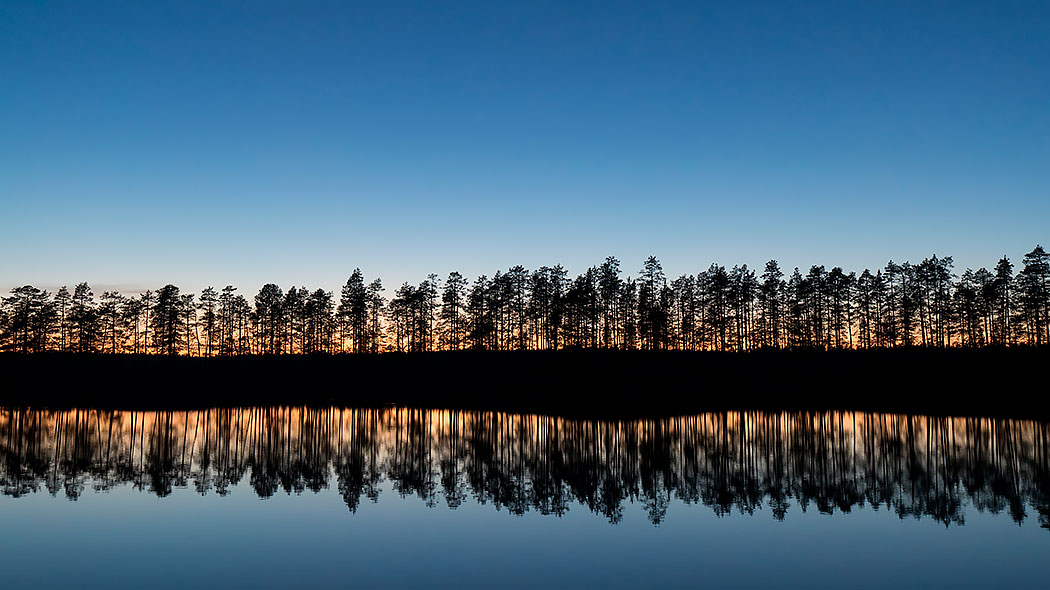
Pristine old-growth pine forests are thinned out by forest fires and covered by shrubby, lichen-growing heaths. Natural understory would be broadly covered by lichen. However, Hossa is reindeer country and the lichens serve as a larder for them.
Pushed and piled up by the edges of the continental ice sheet, moraine areas, such as the spruce-covered Moilasenvaara on the western side of the park, are lusher, because much of the nutrients of the soil have not been flushed away by melting waters at the end of Ice Age. The dominance of spruce on the moraine hills are result of heavy snowfall at higher elevations, which accumulates on the trees. Pines cannot withstand the pack snow snow that forms in the winter. The diversity of old-growth spruce stands in is further increased by abundance of deciduous trees, particularly aspen. The leaves and flowers of the aspen are nutrient-rich food for the flying squirrel, which nests in holes made by woodpeckers. The fine beaks of the titmouse make it easy for them to peck nesting holes in well rotten birch trees. And, there are plenty of insects for them to feast upon.
The mires in Hossa are primarily small in area, but approximately one-third of the park's surface area is covered by various types of mires. A majority of them are barren bogs and sloughs, with smaller patches richer in nutrients.
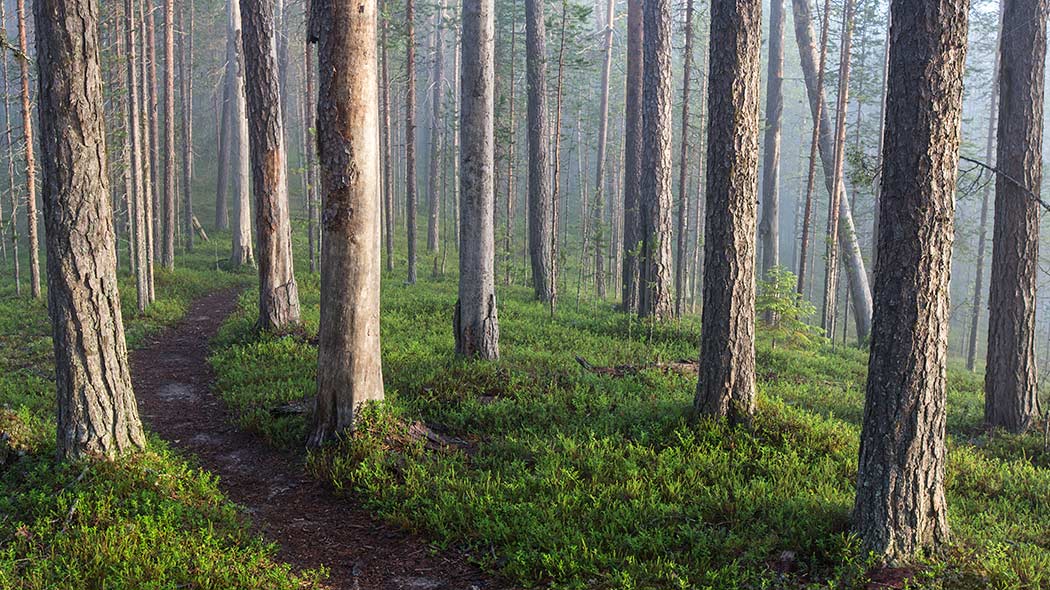
The mires increase Hossa's biodiversity. Mire edges and shorelines are richer in species than other habitats. Since species of both habitats dwell there species from both types of habitats can be found. Ecotones have their own, special conditions - for example, mires and bodies of water increase the moisture levels of edge forests.
Some of the more unique wet areas in Hossa are, low-lying wetlands that dry out in the summer and may be filled with water again with the autumn rains. Their vegetation is, in many cases, reminiscent of that found in open mires. The more compacted moraine soil allows water to collect in depressions.
Lake Öllörijärvi is one of many kettle holes
Because Hossa is the nexus of three watercourses, there is a great deal of flowing water in the area. It boasts over a hundred lakes and ponds. Exept for murky mire ponds, the waters here are low in nutrients and crystal clear. Many of the ponds, such as Lake Öllörijärvi, were formed during the Ice Age and are known as kettle ponds. There are springs in the lake beds, when the esker groundwater pushes up beneath their slopes. Hossa's deep ponds and lakes are nearly in the same state they were at the end of the last Ice Age. Their water is clear and oxygen-rich, with some being groundwater filtered through the eskers.
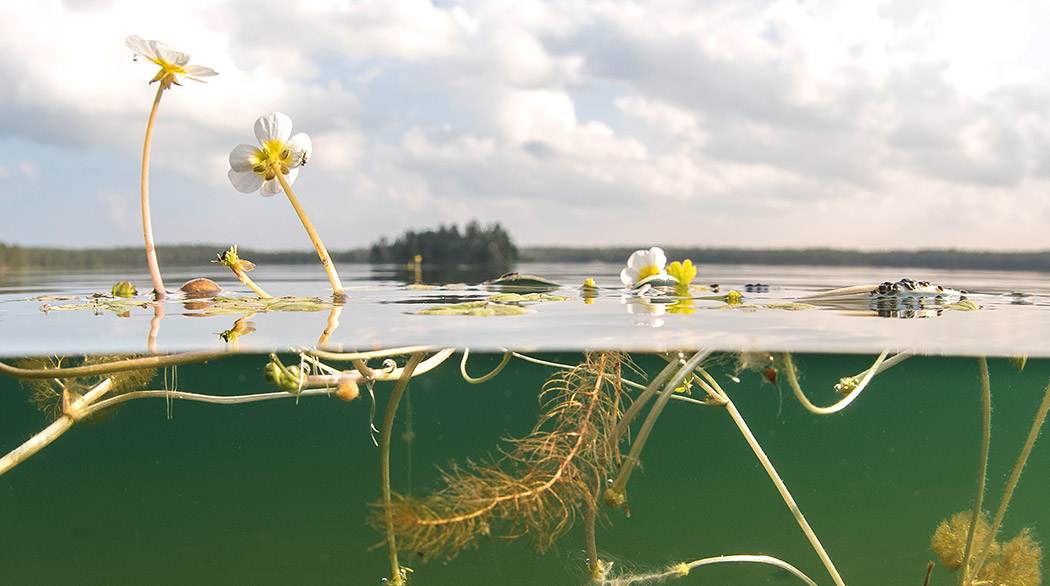
The larger watercourses had been partly dredged out for timber rafts, but some of them have been restored. They provide a habitat for flowing water species. The gravel and rocky bottoms of running waters are extremely important for the grayling and rainbow trout, which spawn in flowing water.
Small bodies of water are some of the least researched nature areas in Hossa. There may be surprises yet to be found in the rich flora and fauna of streams and brooks, such as rare mosses or bottom dwellers. There are many springs and spring fens. A spring fen is a treeless area with a thin layer of peat where the groundwater rises to the surface of the earth and there is no clear spring source. Spring fens are found on the lower slopes of hills and eskers. They often remain open, during the winter.
Amphipods are a treat for fish
The fish in Hossa enjoy an unusually wide range of shellfish food, which thrive in water oxygenated by a large inflow of groundwater. Fish feed on shellfish and insect larvae. Proper nutrition ensures healthy growth. Hossa's whitefish and pike have been sought-after catches for thousands of years, while anglers fish for perch, some even quite large, in ponds. Fish stocks, such as grayling and rainbow trout, are strengthened by stocking waterbodies with fry.

The primary source of food for predatory fish in many lakes is vendace and, in most ponds, it is the ten-spined stickleback. In addition to these, the waters of Hossa also contain amphipods, which are the preferred food of salmon fry. Amphipods were "trapped" in Hossa's ponds after the last Ice Age.
Matsutake and other forest delicacies
The species found in Hossa National Park is typical to the Kainuu region. The northern location of the region is evident in Kainuu's nature and the landscape bears a strong resemblance to Lapland. A special boreal feature is that marsh tea also grows on dry soil, because it receives enough light in the open forest. The blueberry thrives in dryer soil in the north more than it does in the south. Hossa is home to several eastern species, such as the leatherleaf, which is rarely found in the western reaches of Finland. Finding a bunchberry in the forest is a surprise for visitors from the south. Where bunchberry is only found on sea- and lakeshores. Southern species thrive this north on the nutrient-rich slopes of the hills.
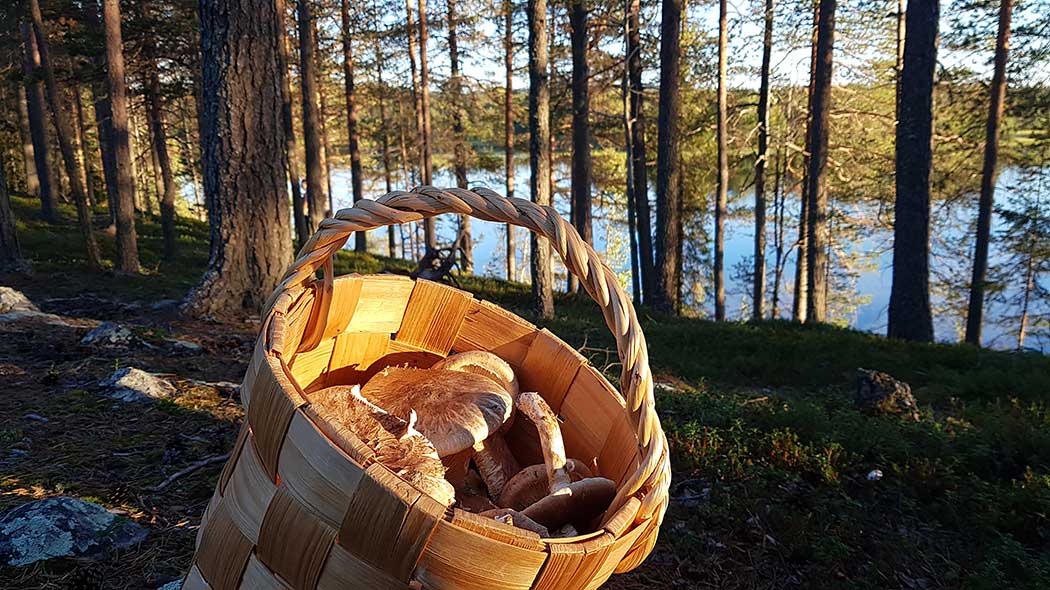
Aquatic vegetation is typical of low-nutrient waters. The water lobelia, which grows in low-nutrient and clear water, is common in Hossa. Water lilies grow in forest ponds. There are no real reed beds in Hossa, but water horsetail can be found in shallow coves.
All kinds of delicacies and vitamins, berries and edible mushrooms can be picked freely in the forests and mires of the national park. The berry harvest depends on the weather in the early summer. Blueberries and lingonberries have the highest yields, and some years give a large crop of cloudberries.
If autumn fails to serve up any porcini mushrooms or chanterelles, one will always find some rufus candy milk-caps. False morels grow in the late spring. In very hot summers, matsutake grows in dry pine forests.
Kingdom of the common redstart
The common redstart is exceptionally common in Hossa. Because the cuckoo often lays its eggs in the nests of common redstarts, the redstarts are probably responsible for most of the 'cuckooing' heard on Hossa's heaths. The abundance of old-growth trees favours hole-nesting birds, such as tits, European pied flycatchers and woodpeckers. The Eurasian three-toed woodpecker lives in old-growth forests searching for food underneath the bark of dying trees. Its presence can be seen in the small, funnel-shaped pecking holes in the sides of trees.
The white-throated dipper can be found along sections of watercourses where the water does not freeze in the winter. This is where they look for food on the river bottom, dipping in through the ice. The buzzig call of the brambling adds to the sensation of being farther north. Hossa is one of the southernmost locations in Finland where the brambling is a more common nesting bird than the finch.
The characteristic call of early summer is the tweeting of the sandpiper. The sandpiper thrives along the barren shorelines of very small bodies of water. A symphonic ensemble of geese, cranes and waders can be heard on a spring morning in the mires. For those wandering even further afield, they might even encounter bean geese, which retreat to forest ponds in the middle of to change the feathers of their wings. Large rafts of merganser chicks float along on the water, while the black-throated diver plays shepherd to no more than two chicks.
Mammals large and small
All of Finland's large carnivores can be seen in the area on occasion. As large carnivores range over a very wide area and tend to avoid humans, they are seldom seen.
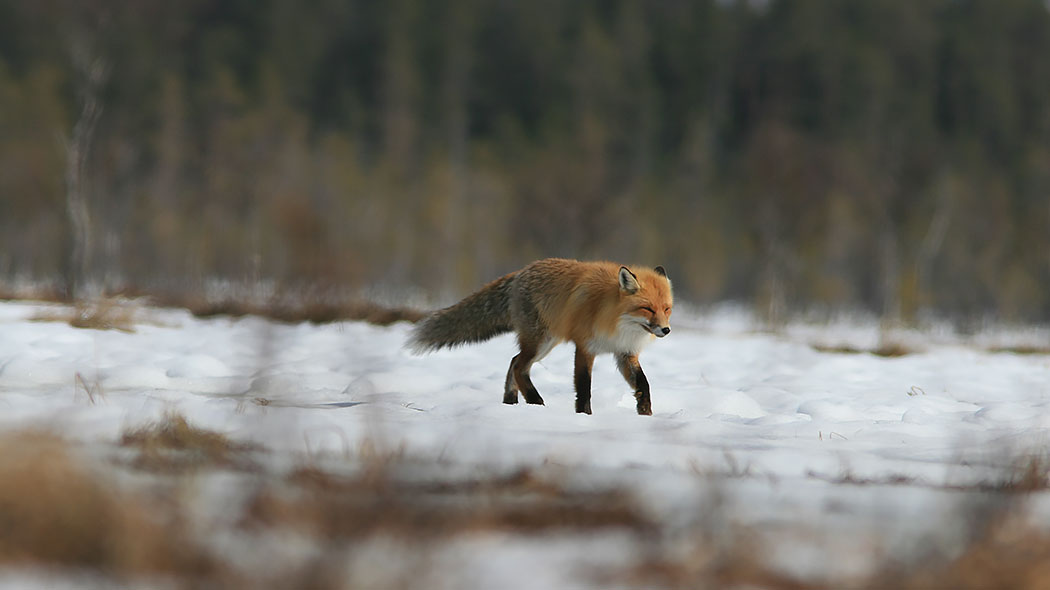
Small mammal populations are kept in check when carnivores succeed. Ermine and least weasel tracks can often be seen in snowdrifts. Otters and beaver also thrive in the area. Moose and reindeer are two of the large herbivore species here. The abundance of reindeer can be seen in the state of local vegetation, particularly in the low amounts of reindeer lichen.
Hossa National Park
- Established 2017
- Area 111 km2

Videos about Hossa
Hossa in Summer (youtube.com)
Project Matkalla Kainuussa
Hossa (youtube.com)
Project Fishing in Finland
River Hossanjoki (youtube.com)
Project Fishing in Finland
Publications of Hossa National Park
Publications of Hossa National Park (julkaisut.metsa.fi)









